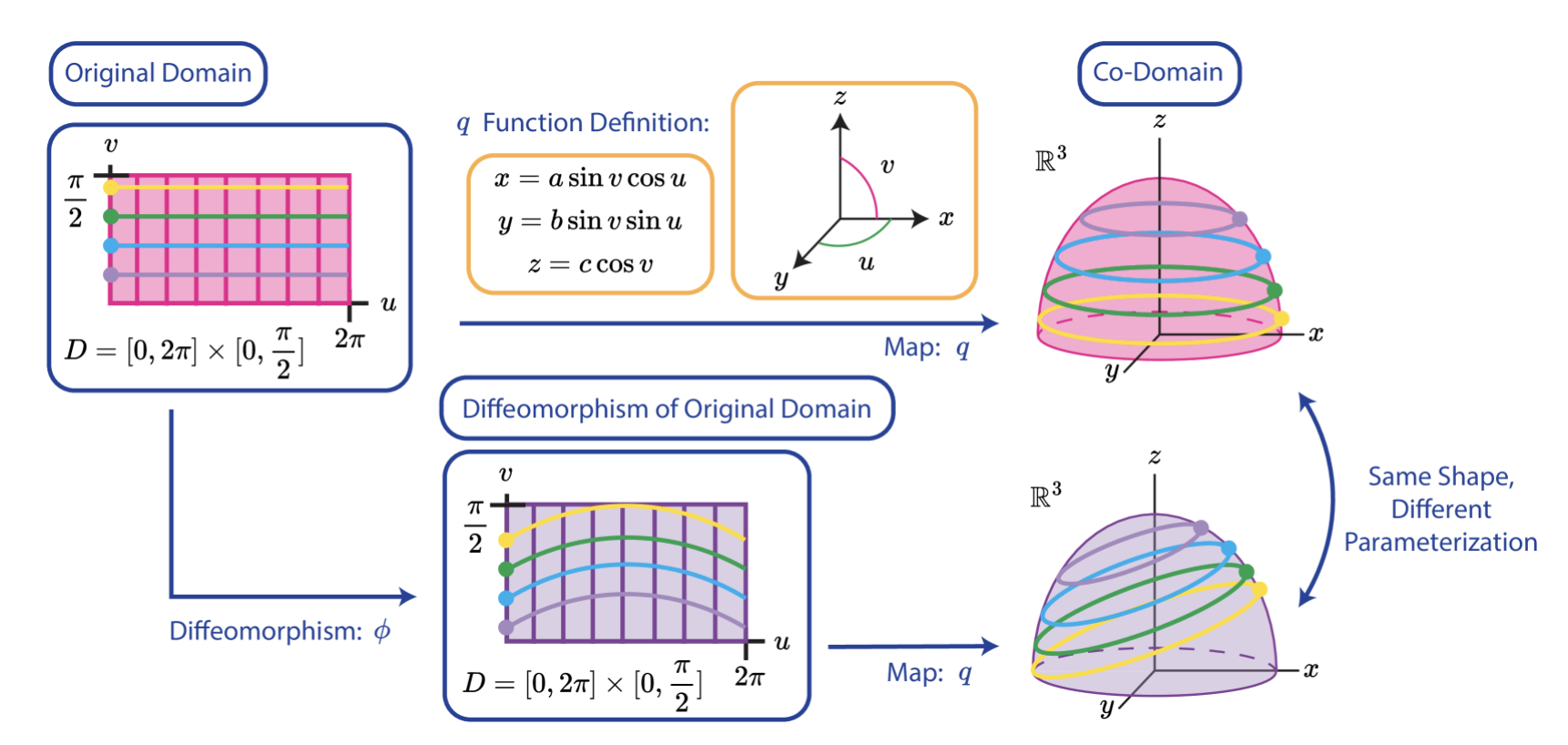Pereira, L., Le Brigant, A., Myers, A., Hartman, E., Khan, A., Tuerkoen, M., Dold, T., Gu, M., Suárez-Serrato, P., Miolane, N.
Abstract
We introduce the shape module of the Python package Geomstats to analyze shapes of objects represented as landmarks, curves and surfaces across fields of natural sciences and engineering. The shape module first implements widely used shape spaces, such as the Kendall shape space, as well as elastic spaces of discrete curves and surfaces. The shape module further implements the abstract mathematical structures of group actions, fiber bundles, quotient spaces and associated Riemannian metrics which allow users to build their own shape spaces. The Riemannian geometry tools enable users to compare, average, interpolate between shapes inside a given shape space. These essential operations can then be leveraged to perform statistics and machine learning on shape data. We present the object-oriented implementation of the shape module along with illustrative examples and show how it can be used to perform statistics and machine learning on shape spaces.
Citation
Pereira, L., Le Brigant, A., Myers, A., Hartman, E., Khan, A., Tuerkoen, M., Dold, T., Gu, M., Suárez-Serrato, P., Miolane, N. (Learning from landmarks, curves, surfaces, and shapes in Geomstats. Transactions of Mathematical Software (TOMS)
BibTeX
@article{pereira2025learning,
title={Learning from landmarks, curves, surfaces, and shapes in Geomstats},
author={Pereira and Le Brigant and Myers and Hartman and Khan and Tuerkoen and Dold and Gu and Su{\'a}rez-Serrato and Miolane},
journal={Transactions of Mathematical Software},
year={2025}
}
